#modest mussorgsky
Photo


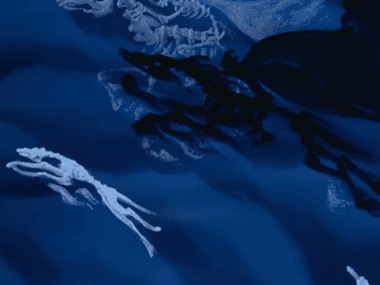
Night on Bald Mountain - Fantasia (1940)
#fantasia gif#disney gif#night on bald mountain#walt disney#animated features#disney classics#animation#modest mussorgsky#vladimir tytla#ghouls#ghosts#1940s#1940#gif#chronoscaph gif
6K notes
·
View notes
Text


С Рождеством🎄 от русских композиторов
#classic composers#classical composer fanart#igor stravinsky#dmitri shostakovich#sergey rachmaninoff#sergey prokofiev#pyotr tchaikovsky#rimsky korsakov#cezar cui#modest mussorgsky#aleksander borodin#mily balakirev
85 notes
·
View notes
Text
Jana Khokhlova and Sergei Novitski Free Dance, 2008.
Night On Bald Mountain by Mannheim Steamroller.
#night on bald mountain!!!#+ mountain king#ice dance#jana khokhlova#sergei novitski#figure skating#2008#night on bald mountain#mannheim steamroller#modest mussorgsky
55 notes
·
View notes
Text

OTD in Music History: Important Russian “Nationalist” composer Modest Mussorgsky (1839 - 1881) is born into a wealthy land-owning Russian family.
Mussorgsky began receiving piano lessons from his mother (a trained pianist) at the age of six. He progressed rapidly, and at the age of ten he and his brother were taken to Saint Petersburg to continue their studies (which included music) at an elite school.
Mussorgsky's parents had also planned the move to Saint Petersburg so that both their sons would renew a longstanding family tradition of military service, and Mussorgsky was thus duly enrolled in the Cadet School Of The Guards at the age of 13.
Unfortunately, this proved to be a brutal environment – indeed, it probably instilled in young Mussorgsky the drinking habits which would ultimately lead him down to the path to terminal alcoholism. (According to another former student, the Head of the Academy at that time "was proud when a cadet returned from leave drunk with champagne.”)
Mussorgsky’s considerable skills as a pianist made him popular with his fellow-cadets, however, and he spent many evenings playing popular dances for his new friends.
Then, in October 1856, the 17-year-old Mussorgsky met the 22-year-old physician Alexander Borodin (1833 - 1887) while both men were serving at a military hospital. Even more portentous was Mussorgsky’s introduction, just a few months later, to Alexander Dargomyzhsky (1813 - 1869), who was then the most important Russian composer after Mikhail Glinka (1804 - 1857).
Dargomyzhsky was so impressed with Mussorgsky's pianism that he invited Mussorgsky to begin attending his soirees, and it was there that Mussorgsky also met Cesar Cui (1835 - 1918) and Mily Balakirev (1837 - 1910), and, through Balakirev, Nicolai Rimsky-Korsakov (1844 - 1908).
Thus was formed the core constituency of the historically important Russian “Nationalist” school of composers known as “The Mighty Five”…
PICTURED: A c. 1920s real photo postcard showing the middle-aged Mussorgsky sporting a very solid mullet.
#classical music#opera#music history#bel canto#composer#aria#classical composer#classical studies#maestro#chest voice#Modest Mussorgsky#classical musician#classical musicians#classical history#history of music#historian of music#opera history#Russian folklore#musician#musicians#diva#prima donna#Boris Godunov
15 notes
·
View notes
Text
youtube
Night On Bald Mountain - Fantasia (1941) (Theatrical Cut)
A beautiful work of animation, with magnificent blend of visual artistry and orchestral music.
#Night On Bald Mountain#fantasia#animation#classical music#modest mussorgsky#franz schubert#the master and margarita#ko zna razumece#october#fall season#autumn#halloween#fall#spooky#spooky season
24 notes
·
View notes
Text
#disney#fantasia#polls#disney polls#the sorcerer's apprentice#the nutcracker suite#rite of spring#night on bald mountain#ave Maria#the pastoral Symphony#dance of the hours#toccata and fugue in d minor#bach#tchaikovsky#paul dukas#stravinsky#beethoven#amilcare ponchielli#modest mussorgsky#schubert#chernabog#sorcerer mickey#the nutcracker#yen sid
26 notes
·
View notes
Text

The Mighty Five
#classical music meme#classical composers#alexander borodin#mily balakirev#cesar cui#modest mussorgsky#nikolai rimsky korsakov
10 notes
·
View notes
Text
my favorite expression markings in music
avec la liberté d'une chanson populaire/with the freedom of a popular song (claude debussy prelude no. 5, "les collines d'anacapri")
peu à peu sortant de la brume/little by little emerging from the mist (claude debussy prelude no. 10, "la cathédrale engloutie")
de manière à obtenir un creux/so as to obtain a hollowness (erik satie, gnossienne no. 3)
with simple tenderness (edward macdowell, to a wild rose)
velocissimo, con tutta forza/very fast, with all force (modest mussorgsky, pictures at an exhibition 1. gnomus)
si deve suonare tutto questo pezzo delicatissimamente e senza sordino/you must play this whole piece very delicately and without pedal (ludwig van beethoven, piano sonata no. 14, "moonlight")
#debussy and satie always have such wonderful expression markings#one of the good things abt french impressionist music i guess#debussy#claude debussy#erik satie#satie#edward macdowell#modest mussorgsky#ludwig van beethoven#beethoven#classical music#piano#moonlight sonata#la cathédrale engloutie#pictures at an exhibition#gnossienne#debussy preludes
62 notes
·
View notes
Text
I feel like it is extremely important to realise that the piece that they play when Princess Carolyn having her painting fantasy is from Pictures At An Exhibition. And it's from the first movement, which is called Prominade. It's an amazing pun and it literally could not be more perfect for this scene like I don't think you underSTAND.
#I am a music nerd#and apparently someone on the bjhm crew is too#and y'all should also be music nerds!#princess carolyn#bojack horseman#bjhm#the shot bjhm#modest mussorgsky#pictures at an exhibition#pictures at an exhibition prominade
10 notes
·
View notes
Text
(Archive) Animated movie of the day: Fantasia (1940)
Originally posted: January 4th, 2022
Walter Elias Disney, a controversial man in life and legacy. A businessman at heart, selling an illusion to audiences he so called magic, and tried to hide many of his lesser traits and allegiances throughout his life. Nonetheless, if there's one thing I can actually admire about the man is that he respected animation as a medium, and this is reflected in one of his passion projects: the unprecedented masterpiece that is Fantasia.
A joint work between the Walt Disney company, professional critic Deems Taylor as the Master of Ceremonies and Leopold Stokowski in the direction of the Philadelphia Orchestra, this anthology of classical music with animation of different styles and flavors ranges from abstract and surreal imagery, to the whimsical, frightening and sublime when it comes to the more defined storytelling of other segments. Music from Bach, Tchaikovsky, Dukas, Stravinsky, Bethooven, Ponchielli and Mussorgksy is featured, each as their own dedicated short, along with a small intermission where a sound track is given characterization.
The end result is a highly varied compilation of shorts with both subtle and stark differences in art direction, and a very experimental approach to what animation is about. In many, many ways it was impressively ahead of it's time, which only makes it's dissapointing performance at the box office back in the day all the more saddening.
This isn't to say everything about it is timeless or feels contemporary. While still a remarkable achievement of animation, where just short of 80 years later it's still engrossing and impressive, instances like the now cut character of Sunflower in the Pastoral Symphony segment reflect the ugly, racist side of American culture at the time. There's other less insulting but still dated bits, like how Taylor claims nobody performs the Nutcracker ballet anymore. Yeah, right.
Even so, for any animation enthusiast it's a must watch.

Honestly, this movie gives so much to talk about for an animation enthusiast. I think it warrants writing some thoughts about each segment.
Toccata and Fugue in D Minor(Johann Sebastian Bach): A powerful musical piece to start, but visually speaking it's not the strongest opening. While I do appreciate(immensely I might add) that Disney did NOT go for the stereotyped scary imagery associated with this piece but instead something more sublime (given the dynamic range the toccata actually offers), the abstract imagery doesn't necessarily lend anything substantial to the music, even when it goes from dark places to the very heavens. That is, when the animation actually starts, since a not so small segment of the short is the performers shot in silhouette. Stokowski's arrangement of the piece isn't the most evocative version of this musical milestone either.
Still, on a technical level, the animation is remarkable, and given the significant shifts in the musical structure they did what they could.
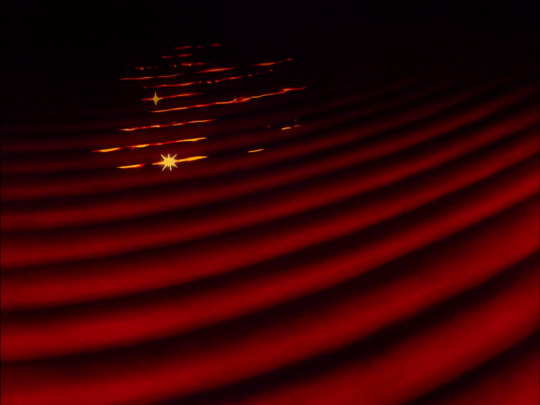

---
Nutcracker suite(Pyotr Ilyich Tchaikovsky): While the narrative is less abstract, it's certainly not very defined either. The animation, however, is much more evocative and beautiful to look at, with soft movements of ballet like quality; all too fitting for the piece.
Given it is associated to a narrative that is already well defined, the animators pretty much gave themselves a challenge by pursuing a significantly different direction that, while still using imagery related to fairies, it has a focus entirely put on the beauty of nature. Giving flowers and mushrooms alike anthropomorphic qualities but also allowing them to just move at the pace of the wind, the effects animation here is as stunning as it is educational for any aspiring animator. Colorful and soft, it's just a visual delight.


---
The Sorcerer's Apprentice(Paul Dukas): By far the most popular and well known segment of the film, this short based on a poem from Goethe puts Mickey Mouse in the role of said apprentice under the guide of Yen Sid(subtle reference right there). The irony of the impressionist piece being the first one to get a proper narrative aside, this short is still as charming as ever was.
While the effects animation isn't any less remarkable(in fact, my hat goes off for all those involved in the water animation of this segment), the pressence of Mickey Mouse and the broom make the character animation be the star of the show this time, and it still holds up. It goes all the way to show the power of well composed body language that you can follow the story even without Taylor's prior introduction.

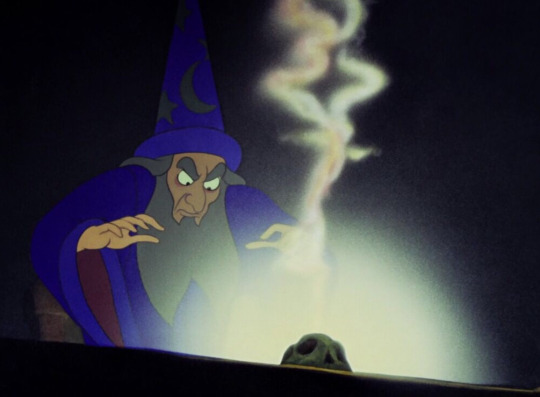
---
Rite of the Spring(Igor Fyodorovich Stravinsky): A piece from the only composer that was still alive to see the film(who also GREATLY disliked the interpretation of his piece, calling the performance execrable) this is a valiant effort of wordless stoytelling with creatures of minimal anthropomorphic qualities.
While Taylor's introduction already hammers in the era in which this was made(he has to tiptoe around calling scientific observations "facts" to not get flak from conservative Christians), the representation of dinosaurs is anachronistic and dated as well, so is the vagueness of what destroyed them(the crater of the meteor that caused their mass extinction wasn't discovered until 1978).
Still. the segment creates genuine feelings of menace from the Tyrannosaurus Rex, and the effects animation is still remarkable(special mention goes to the magma and the smoke, even though fire doesn't look quite right in some shots). It does what it sets to do in presenting the power of nature.


---
Intermission/Meet the Soundtrack: The brief jazz number by the orchestra is nice, and honestly, the Sound track is pretty adorable for a non descriptive collection of shapes. It's also impressive how they managed to give different sounds visual abstract equivalents.
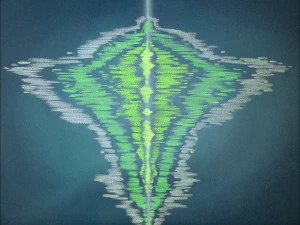
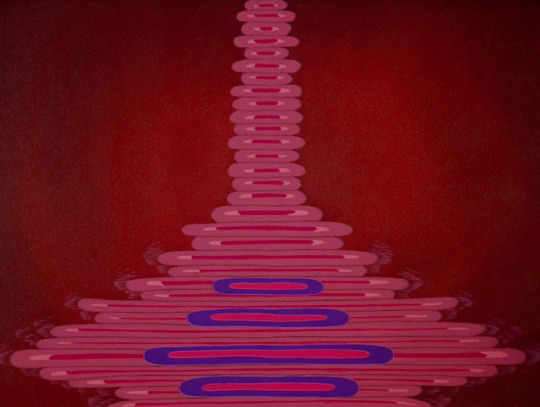
---
Pastoral Symphony(Ludwig van Beethoven): The only part of Disney's Movie canon to feature female nudity along with the Night on Bald Mountain segment(at least until later rereleases), it's whimsical depiction of Greek Mythology still manages to be more accurate to the source material than future endeavors of the company such as Hercules, humorously enough. The greek gods weren't nice people, and this segment has some fun with that(remember kids, Zeus is a jerk). The extremely simple love story between the centaurs is still wholesome though, and the imagery is very creative.
The animation complexity of this short lead to some small animation errors but you're not gonna notice if you're not looking for them. It also has in my opinion the most beautiful backgrounds of the film, rivalled only by some segments of the naturalistic beauty of the Nutcracker Suite.
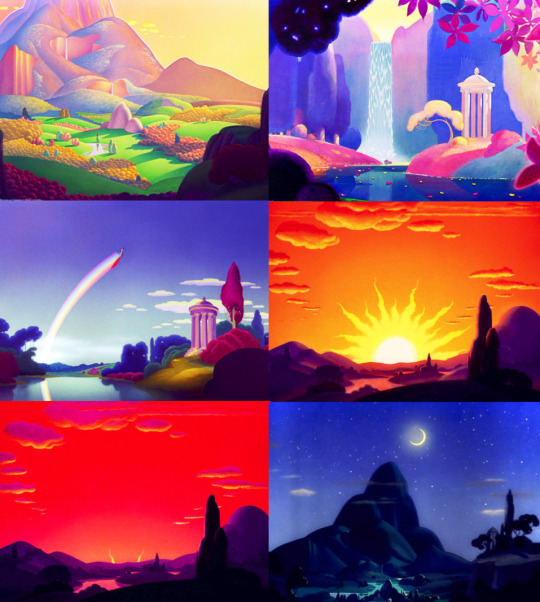
---
Dance of the Hours(Amilcare Ponchielli): Charmingly innocent in a way that it's not seen very often anymore, it uses it's ballet roots in a fairly literal fashion by making a ballet number with different species of animals representing different hours of the day. The body language of these animals is just brilliant, they're expressive, carry a well defined movement to each one(that isn't realistic but definitely distinctive) and there's something inherently comical about how they dance, even when they do it effectively.
Honestly given the premise of the ballet this is the one short where I'd have gone abstract. I can't complain though, since the humorous gags and silly imagery just make it a sincerely funny experience, albeit not the most remarkable among the anthology(plus, female ostriches don't have the black and white plumage, but let's not get too nitpicky here).


---
Night on Bald Mountain/Ave Maria(Modest Petrovich Mussorgsky/ Franz Peter Schubert): Try to act surprised when I tell you the spooky segment is my favorite part of the movie. At the same time, however, I think it's warranted in this case. Horror is not something animation was known for back in the day. Even if movies like Pinocchio had some remarkably dark imagery, the medium in general was being pushed towards this kid oriented market, so this short was in many ways daring. And the end result both hits the mark with the fear and also happens to deliver one of the more complete narratives in the film. It's not just about the spooks, but the catharsis afterwards.
Chernabog(or as it is referred by Taylor, Satan himself) has such a commanding presence it's overwhelming. Even if you don't find him scary you WILL remember his face, full of wickedness and evil(Vladimir Tytla's animation of the character is one of the biggest achievements in the entire film, which is saying something). The imagery is adequately hellish as well, thanks to a masterful art direction that brings the shadows of Walpurgis night to life. The use of experimental animation techniques helped as well, with the ghosts requiring some clever use of distorted mirrors to create. And the release from the nightmare with the Ave Maria, which was the most demanding shot for the animators at the time(and not just on this project but maybe in animation as a whole at that point)? The perfect cap for a movie that made history for good reason.



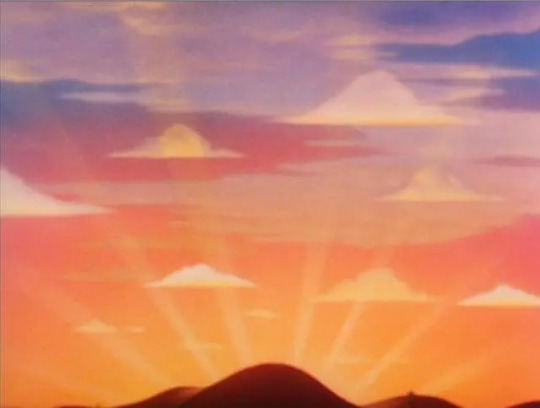
So yeah, that's Fantasia. Man, that was a long one.
#roskirambles#animated films#walt disney#johan sebastian bach#pyotr ilyich tchaikovsky#paul dukas#johan wolfgang von goethe#igor stravinsky#ludwig van beethoven#amilcare ponchielli#modest mussorgsky#franz schubert#mickey mouse#chernabog#fantasia#greek mythology#leopold stokowski#deems taylor
4 notes
·
View notes
Text
This is an editted version of Dmitri Hvorostovsky, The late Russian Baritone singing all parts of M. Mussorgsky's Songs and Dances of Death in 1993 at Proms. This was Dmitri's Proms debut and also the most passionate performance of Songs an Dances of Death from him in my opinion. This is sadly not the full performance but it is very good none the less.
youtube
( Not my video )
#Youtube#Dmitri Hvorostovsky#Songs and dances of Death#modest mussorgsky#opera singer#proms#royal albert hall#1993#hvorostovsky
18 notes
·
View notes
Text

youtube
2 notes
·
View notes
Text

Modest Mussorgsky (1839-1881)
Russian composer
by Ilya Repin
Tetryakov Gallery - Moscow
4 notes
·
View notes
Text
Уф, тяжело! Дай дух переведу («сцена с курантами»)
Fragment from the Boris Godunov film 1954
Boris Godunov by Modest Mussorgsky performed in Russian:
Conductor Vasily Nebolsin - 1954
Orchestra - Bolshoi Theatre
Chorus - Bolshoi Theatre
Boris - Alexander Stepanovich Pirogov
Mussorgsky’s Boris Godunov – was premiered in St Petersburg 150 years ago today.
#classical music#opera#music history#bel canto#composer#classical composer#aria#classical studies#maestro#chest voice#Boris Godunov#modest mussorgsky#Alexander Pirogov#bass#classical musician#classical musicians#classical history#historian of music#musician#musicians#Bolshoi Theatre#Mariinsky Theatre#tsar Boris Godunov#tsar#opera movie#movie#film#mad scene#Александр Пирогов
5 notes
·
View notes
Text
youtube
Modest Mussorgsky - "Shaklovity's Aria"; Act III; KHOVANSCHINA
Dmitri Hvorostovsky--baritone
Constantine Orbelian--conductor Philharmonia of Russia
5 notes
·
View notes
Text
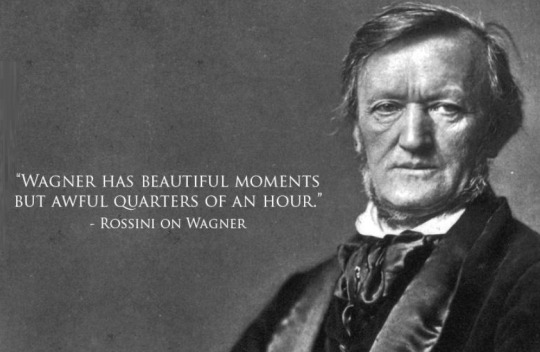


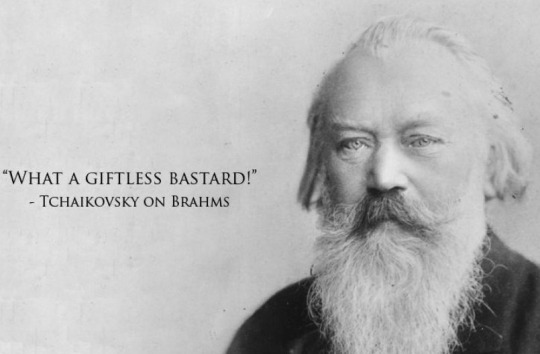

Músicos sobre músicos
20 notes
·
View notes